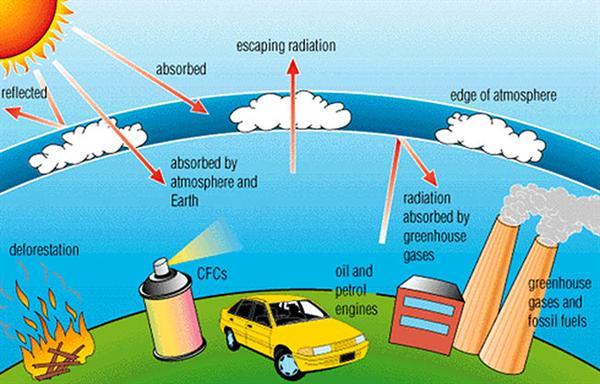CLIMATE CHANGE: WHAT ARE WE TALKING ABOUT?
“What’s the use of a fine house if you haven’t got a tolerable planet to put it on?”
—Henry David Thoreau
The year is 2021, you have just come out of hiding and now have access to the
internet. Amongst the many things the netizens are raving about, climate change
seems to be a regular. You see ads mention eco-friendly, and save the
planet campaigns are a thing. The colour green is being used to describe
gases and energy, things that did not have colours before you went into hiding.
Well,
Welcome back! Let us start with the international headliner: Climate Change. This
phenomenon that nearly everyone seems to be (rightly) agitating about is a
long-term change in the average weather patterns that have come to define the Earth's
local, regional, and global climates. Simply put, it is a change in the normal
weather patterns of a place over a long period. Let’s say your hometown is
Wasinmi, in Ogun State Nigeria, and the harmattan season usually starts
in mid to late November. A change in climatic conditions might mean that
Wasinmi does not experience the cold harmattan winds until January of the next
year. While this is a hypothetical scenario, it closely mirrors what happened
across most parts of Nigeria in 2020. Your next question might be, why would
that even happen? Why would the beautiful harmattan season decide to come late?
Scientists
have extensively explored and confirmed the why of climate change for decades
now. While natural phenomena such as extreme weather events and volcanic
eruptions, or the interactions between components of the climate system may
cause the climate to vary, human activities such as the burning of fossil
fuels, agricultural practices, and deforestation have accelerated the pace of
climate change. According to scientists at NASA, for example, “These (aforementioned)
natural causes are still in play today, but their influence is too small, or
they occur too slowly to explain the rapid warming seen in recent decades.”
The main driver of climate change is the enhanced greenhouse effect. Greenhouses are glass or
plastic structures where plants that cannot withstand excessive heat or cold
are grown. They warm up during the day via penetration of the sun's rays which
heat the plants and soil, trapping the solar energy and preventing it from
leaking back into space. Greenhouse gases are naturally present in the Earth’s
atmosphere, and they have a similar effect to greenhouses- they trap part of
the solar radiation that reaches the Earth, ensuring that the planet is warm
enough to support life. Human activities are rapidly driving up the atmospheric
concentrations of these gases leading to global warming, which is a gradual
increase in the overall temperature of the Earth's atmosphere attributed to the
enhanced greenhouse effect.
 |
| Human contributions to greenhouse effect |
Carbon dioxide emitted due to human activities is the highest contributor to global warming. By 2019, its concentration in the atmosphere had risen to 148% of the pre-industrial (before 1750) level, primarily due to cement production, deforestation, and other land-use practices. The atmospheric concentration of methane, a more potent greenhouse gas than carbon dioxide but with a shorter atmospheric lifespan has risen to 260% of the pre-industrial level due to cattle farming, fossil fuel burning, landfills, and rice agriculture.
In summary, the climate is rapidly changing for the worse due to human activities. Although some of these activities appear to be essential for life as we now know it, the success that has been achieved in the campaign to preserve the ozone layer has shown that change is possible if everyone acts together. However, we must approach this task with the utmost sense of responsibility that it deserves. We need to, in the words of Greta Thunberg, "… act as if the house (Earth) is on fire because it is."







Comments
Post a Comment